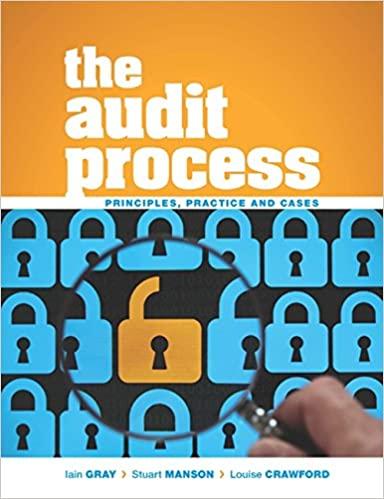Answered step by step
Verified Expert Solution
Question
1 Approved Answer
i need help Jorge and Anita, married taxpayers, earn $150,000 in taxable income and $40,000 in interest from an investment in City of Heflin bonds.
i need help 




Jorge and Anita, married taxpayers, earn $150,000 in taxable income and $40,000 in interest from an investment in City of Heflin bonds. (Use the U.S. tax rate schedule for married filing jointly.) Required: a. If Jorge and Anita earn an additional $100,000 of taxable income, what is their marginal tax rate on this income? b. What is their marginal rate if, instead, they report an additional $100,000 in deductions? Note: For all requirements, round your answers to 2 decimal places. Hugh has the choice between investing in a City of Heflin bond at 6 percent or investing in a Surething Incorporated bond at 9 percent. Assuming that both bonds have the same nontax characteristics and that Hugh has a 40 percent marginal tax rate, what interest rate does Surething Ineorporated need to offer to make Hugh indifferent between investing in the two bonds? Hugh has the choice between investing in a City of Heflin bond at 6 percent or investing in a Surething Incorporated bond at 9 percent. Assuming that both bonds have the same nontax characteristics and that Hugh has a 40 percent marginal tax rate, In w bond should he invest? Jorge and Anita, married taxpayers, earn $150,000 in taxable income and $40,000 in interest from an investment in City of Heflin bonds. Using the U.S. tax rate schedule for married filing jointly, how much federal tax will they owe? What is their average tax rate? What is their effective tax rate? What is their current marginal tax rate? Note: Round your percentage answers to 2 decimal places. If taxable income is over: But not over: The tax is: \begin{tabular}{|c|c|c|} \hline$11,000 & 10% of taxable income \\ \hline$11,000 & $44,725 & $1,100 plus 12% of the excess over $11,000 \\ \hline$44,725 & $95,375 & $5,147 plus 22% of the excess over $44,725 \\ \hline$95,375 & $182,100 & $16,290 plus 24% of the excess over $95,375 \\ \hline$182,100 & $231,250 & $37,104 plus 32% of the excess over $182,100 \\ \hline$231,250 & $578,125 & $52,832 plus 35% of the excess over $231,250 \\ \hline$578,125 & - & $174,238,25 plus 37% of the excess over $578,125 \\ \hline \end{tabular} Schedule Y-1-Married Filing Jointly or Qualifying surviving spouse If taxable income is over: But not over: The tax is: \begin{tabular}{|c|c|l|} \hline$22,000 & 10% of taxable income \\ \hline$22,000 & $89,450 & $2,200 plus 12% of the excess over $22,000 \\ \hline$89,450 & $190,750 & $10,294 plus 22% of the excess over $89,450 \\ \hline$190,750 & $364,200 & $32,580 plus 24% of the excess over $190,750 \\ \hline$364,200 & $462,500 & $74,208 plus 32% of the excess over $364,200 \\ \hline$462,500 & $693,750 & $105,664 plus 35% of the excess over $462,500 \\ \hline$693,750 & - & $186,601.5 plus 37% of the excess over $693,750 \\ \hline \end{tabular} Schedule Z-Head of Household \begin{tabular}{|c|c|c|} \hline If taxable income is over: & But not over: & \multicolumn{1}{|c|}{ The tax is: } \\ \hline$0 & $15,700 & 10% of taxable income \\ \hline$15,700 & $59,850 & $1,570 plus 12% of the excess over $15,700 \\ \hline$59,850 & $95,350 & $6,868 plus 22% of the excess over $59,850 \\ \hline$95,350 & $182,100 & $14,678 plus 24% of the excess over $95,350 \\ \hline$182,100 & $231,250 & $35,498 plus 32% of the excess over $182,100 \\ \hline$231,250 & $578,100 & $51,226 plus 35% of the excess over $231,250 \\ \hline$578,100 & - & $172,623,5 plus 37% of the excess over $578,100 \\ \hline \end{tabular} Schedule Y-2-Married Filing Separately If taxable income is over: But not over: The tax is 




Step by Step Solution
There are 3 Steps involved in it
Step: 1

Get Instant Access to Expert-Tailored Solutions
See step-by-step solutions with expert insights and AI powered tools for academic success
Step: 2

Step: 3

Ace Your Homework with AI
Get the answers you need in no time with our AI-driven, step-by-step assistance
Get Started


